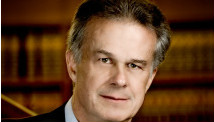SAN DIEGO (AP) — Tiger Woods is a winner again at Torrey Pines, and the only question Monday was how long it would take him to finish.
Woods stretched his lead to eight shots in the Farmers Insurance Open before losing his focus and his patience during a painfully slow finish by the group ahead.
Despite dropping four shots over the last five holes, he still managed an even-par 72 for a four-shot victory on the course where he has won more than any other in his pro career.
He won the tournament for the seventh time, one behind the record held by Sam Snead, who won the Greater Greensboro Open eight times. It was the eighth time Woods won at Torrey Pines, which includes his playoff win in the 2008 U.S Open.
This one was never close.
Woods built a six-shot lead with 11 holes to play when the final round of the fog-delayed tournament was suspended Sunday by darkness. He returned Monday — a late morning restart because CBS Sports wanted to show it in the afternoon on the East Coast — and looked stronger than ever until the tournament dragged to a conclusion.
Having to wait on every tee and from every fairway — or the rough, in his case — Woods made bogey from the bunker on the 14th, hooked a tee shot on the 15th that went off the trees and into a patch of ice plant and led to double bogey, and then popped up his tee shot on the 17th on his way to another bogey.
All that affected was the score. It kept him from another big margin of victory, though the message was clear about his game long before that.
One week after he missed the cut in Abu Dhabi, he ruled at Torrey Pines.
It was his 75th career win, seven short of the Snead's all-time tour record.
"It got a little ugly toward the end," Woods said. "I started losing patience a little bit with the slow play. I lost my concentration a little bit."
He rallied with a two-putt par on the 18th hole to win by four shots over defending champion Brandt Snedeker and Josh Teater, who had the best finish of his career.
Like so many of his big wins, the only drama was for second place.
Brad Fritsch, the rookie from Canada, birdied his last two holes for a 75. That put him into a tie for ninth, however, making him eligible for the Phoenix Open next week.
Fritsch had been entered in the Monday qualifier that he had to abandon when the Farmers Insurance Open lost Saturday to a fog delay.
Woods effectively won this tournament in the final two hours Sunday, when he stretched his lead to six shots with only 11 holes to play. Nick Watney made a 10-foot birdie putt on the par-5 ninth when play resumed to get within five shots, only to drop three shots on the next five holes.
Everyone else started too far behind, and Woods wasn't about to come back to them.
Even so, the red shirt seemed to put him on edge. It didn't help that as he settled over his tee shot on the par-5 ninth, he backed off when he heard a man behind the ropes take his picture.
Woods rarely hits the fairway after an encounter with a camera shutter, and this was no different — it went so far right that it landed on the other side of a fence enclosing a corporate hospitality area.
Woods took his free drop, punched out below the trees into the fairway and then showed more irritation when his wedge nicked the flag after one hop and spun down the slope 30 feet away instead of stopping next to the hole.
He didn't show much reaction on perhaps his most memorable shot of the day — with his legs near the edge of a bunker some 75 feet to the left of the 11th green, he blasted out to the top shelf and watched the ball take dead aim until it stopped a foot short.
He failed to save par from a bunker on the 14th, and he hooked his tee shot so badly on the 15th hole that it traveled only about 225 yards before it was gobbled up by the ice plant. He had to take a penalty drop and wound up making double bogey.
More than his 75th career win, it was a strong opening statement for what could be a fascinating 2013.
Before anyone projects a monster year for Woods based on one week — especially when that week is at Torrey Pines — remember that he just missed the cut last week in Abu Dhabi.
Woods said he wasn't playing much differently, and would have liked two more rounds in the Middle East. Instead, a two-shot penalty for a bad drop sent him home.
Still, in healthier and happier times he usually was sharp coming after a long layoff. Throw out the trip to the Arabian Gulf, and he is.
Was this a statement?
Woods was eight shots ahead with five holes to play when he stumbled his way to the finish line, perhaps from having to kill time waiting on the group ahead. Erik Compton, Steve Marino and Fritsch had an entire par 5 open ahead of them at the end of the round.
Still, Woods played a different game than everyone else at Torrey Pines.
"I think he wanted to send a message," said Hunter Mahan, who shares a swing coach with Woods. "I think deep down he did. You play some games to try to motivate yourself. There's been so much talk about Rory (McIlroy). Rory is now with Nike. That would be my guess."
Mahan got a good look at Woods this week, playing in the group behind him on the front nine because Mahan was first off on the two-tee start.
"He looked strong," Mahan said. "He had great control of his swing. He was hitting some strong shots, different from any other player I saw out here."
Woods is not likely to return to golf until the Match Play Championship next month.


